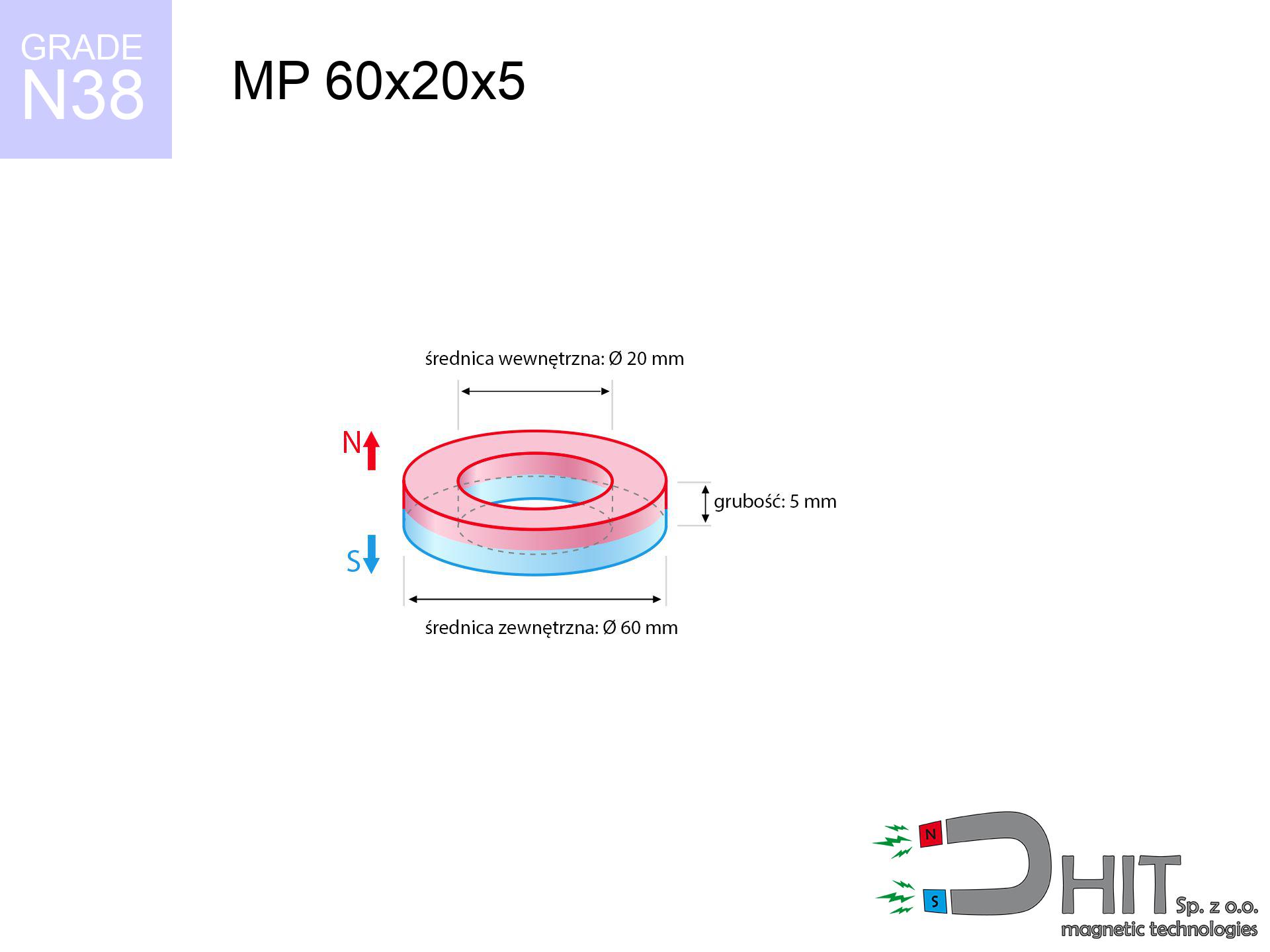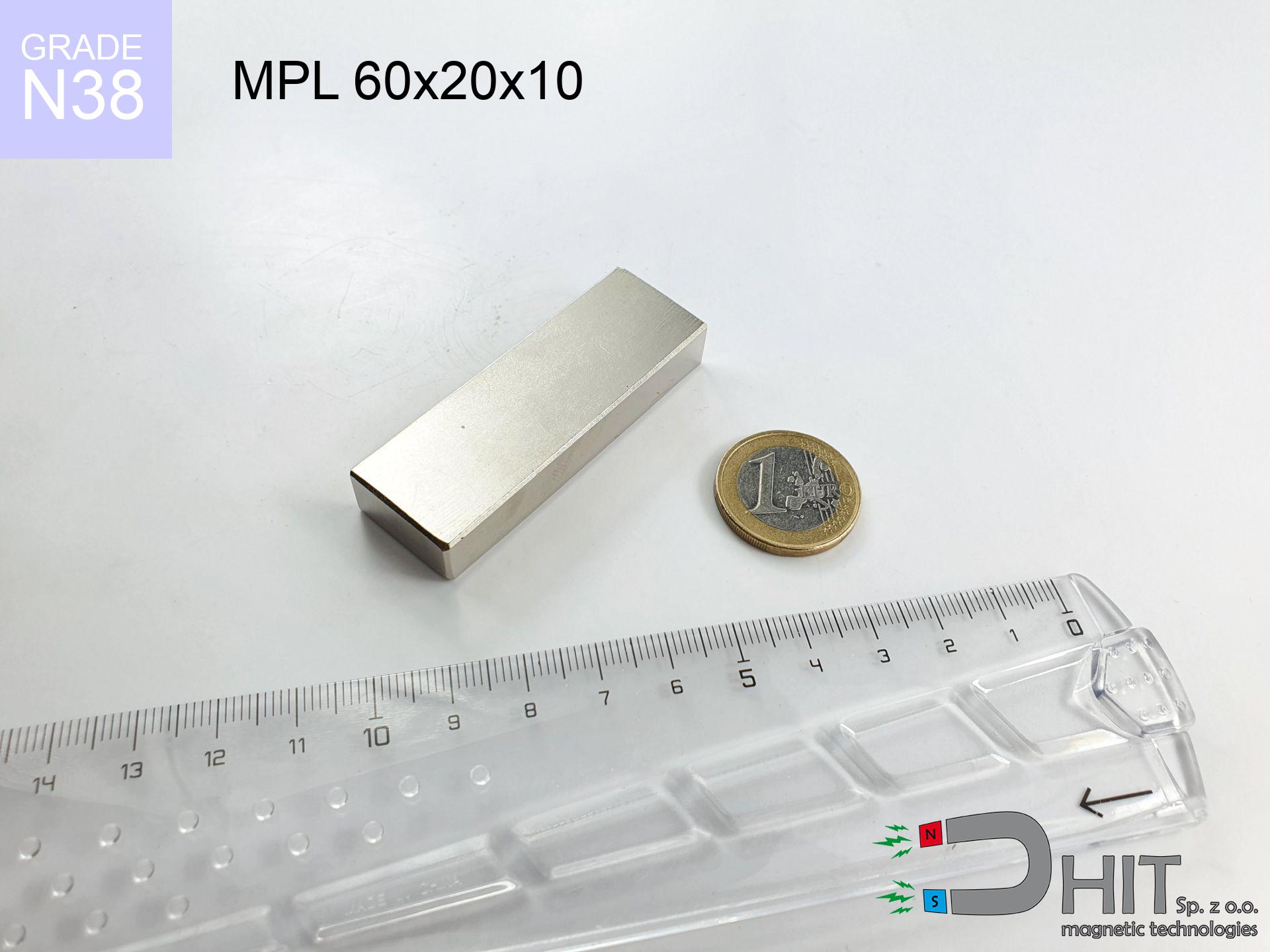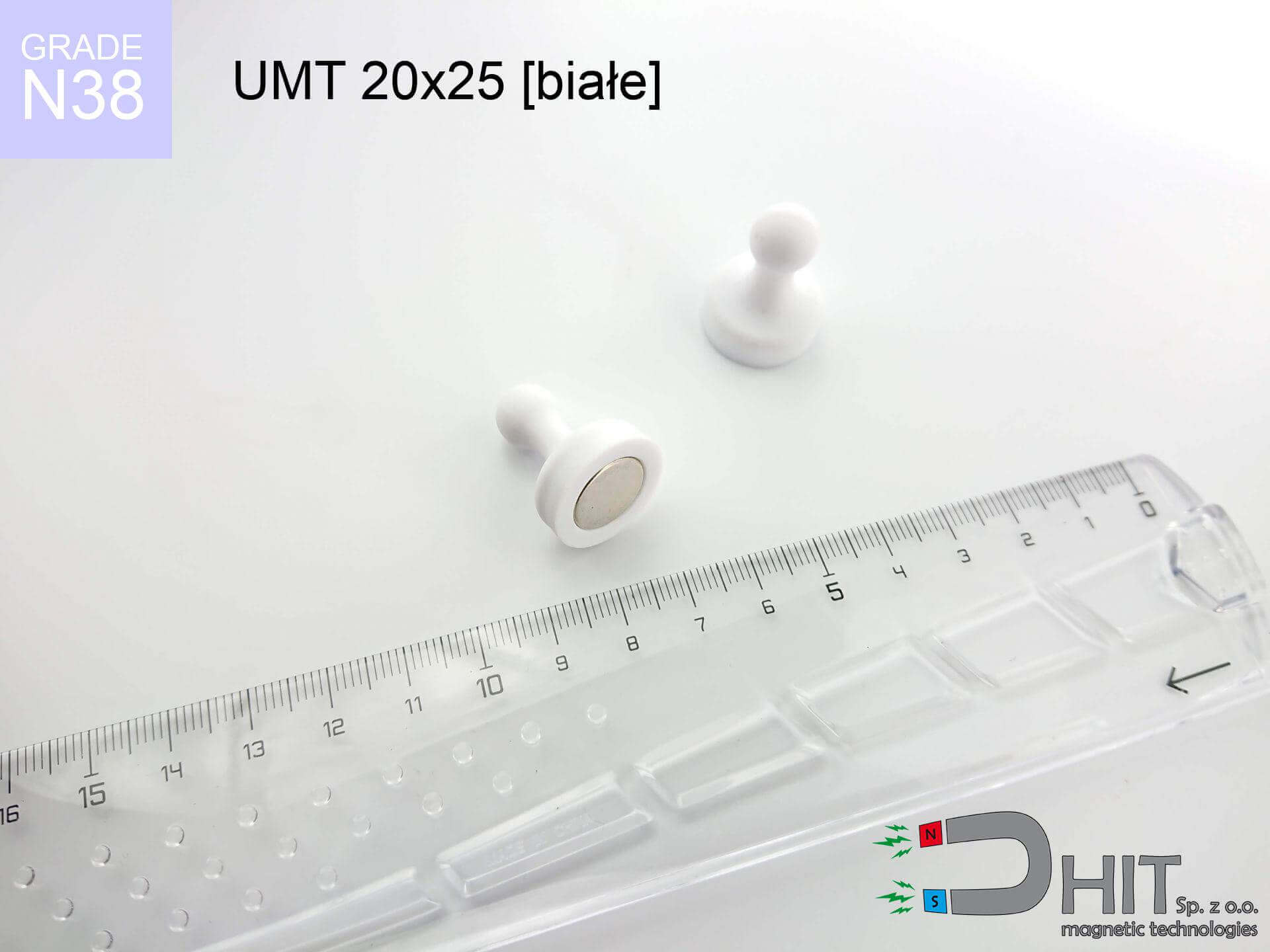MP 60x20x5 / N38 - ring magnet
ring magnet
Catalog no 030204
GTIN: 5906301812210
Diameter
60 mm [±0,1 mm]
internal diameter Ø
20 mm [±0,1 mm]
Height
5 mm [±0,1 mm]
Weight
47.12 g
Magnetization Direction
↑ axial
Load capacity
5.7 kg / 55.9 N
Magnetic Induction
175.24 mT
Coating
[NiCuNi] nickel
47.99 ZŁ with VAT / pcs + price for transport
39.02 ZŁ net + 23% VAT / pcs
bulk discounts:
Need more?Not sure about your choice?
Contact us by phone
+48 888 99 98 98
if you prefer let us know through
request form
the contact form page.
Strength and appearance of magnets can be verified on our
magnetic mass calculator.
Order by 14:00 and we’ll ship today!
Magnetic properties of material N38
Physical properties of sintered neodymium magnets Nd2Fe14B at 20°C
Shopping tips
Advantages and disadvantages of rare earth magnets.
Besides their high retention, neodymium magnets are valued for these benefits:
- They do not lose magnetism, even over approximately 10 years – the reduction in strength is only ~1% (according to tests),
- Neodymium magnets prove to be highly resistant to demagnetization caused by external interference,
- Thanks to the shimmering finish, the plating of Ni-Cu-Ni, gold, or silver-plated gives an visually attractive appearance,
- Neodymium magnets achieve maximum magnetic induction on a their surface, which increases force concentration,
- Due to their durability and thermal resistance, neodymium magnets can operate (depending on the form) even at high temperatures reaching 230°C or more...
- Thanks to versatility in constructing and the capacity to adapt to client solutions,
- Key role in future technologies – they are commonly used in magnetic memories, electric motors, diagnostic systems, and other advanced devices.
- Thanks to their power density, small magnets offer high operating force, with minimal size,
Disadvantages of NdFeB magnets:
- They are fragile upon too strong impacts. To avoid cracks, it is worth protecting magnets in special housings. Such protection not only shields the magnet but also improves its resistance to damage
- Neodymium magnets decrease their force under the influence of heating. As soon as 80°C is exceeded, many of them start losing their power. Therefore, we recommend our special magnets marked [AH], which maintain stability even at temperatures up to 230°C
- Due to the susceptibility of magnets to corrosion in a humid environment, we advise using waterproof magnets made of rubber, plastic or other material resistant to moisture, in case of application outdoors
- Limited ability of producing nuts in the magnet and complex forms - preferred is casing - mounting mechanism.
- Possible danger to health – tiny shards of magnets pose a threat, in case of ingestion, which is particularly important in the aspect of protecting the youngest. Furthermore, small components of these products are able to complicate diagnosis medical in case of swallowing.
- Higher cost of purchase is a significant factor to consider compared to ceramic magnets, especially in budget applications
Maximum holding power of the magnet – what it depends on?
The load parameter shown refers to the limit force, obtained under laboratory conditions, namely:
- with the contact of a yoke made of low-carbon steel, guaranteeing full magnetic saturation
- possessing a thickness of minimum 10 mm to avoid saturation
- characterized by lack of roughness
- with zero gap (without impurities)
- during pulling in a direction perpendicular to the mounting surface
- at temperature approx. 20 degrees Celsius
Practical lifting capacity: influencing factors
Bear in mind that the working load may be lower influenced by elements below, in order of importance:
- Gap between magnet and steel – every millimeter of separation (caused e.g. by varnish or dirt) drastically reduces the pulling force, often by half at just 0.5 mm.
- Force direction – catalog parameter refers to pulling vertically. When slipping, the magnet holds much less (typically approx. 20-30% of nominal force).
- Wall thickness – thin material does not allow full use of the magnet. Part of the magnetic field penetrates through instead of converting into lifting capacity.
- Plate material – mild steel gives the best results. Higher carbon content lower magnetic permeability and holding force.
- Plate texture – ground elements ensure maximum contact, which improves field saturation. Rough surfaces reduce efficiency.
- Heat – NdFeB sinters have a negative temperature coefficient. When it is hot they are weaker, and in frost gain strength (up to a certain limit).
* Holding force was tested on a smooth steel plate of 20 mm thickness, when the force acted perpendicularly, however under parallel forces the load capacity is reduced by as much as fivefold. Additionally, even a slight gap {between} the magnet’s surface and the plate decreases the holding force.
Warnings
Dust is flammable
Drilling and cutting of neodymium magnets poses a fire hazard. Magnetic powder reacts violently with oxygen and is difficult to extinguish.
Do not give to children
Only for adults. Tiny parts can be swallowed, leading to intestinal necrosis. Keep away from children and animals.
Compass and GPS
A powerful magnetic field interferes with the operation of compasses in phones and navigation systems. Maintain magnets close to a smartphone to avoid damaging the sensors.
Allergy Warning
Studies show that nickel (the usual finish) is a common allergen. If you have an allergy, refrain from touching magnets with bare hands or choose coated magnets.
Bodily injuries
Protect your hands. Two powerful magnets will join immediately with a force of several hundred kilograms, destroying everything in their path. Exercise extreme caution!
Cards and drives
Powerful magnetic fields can erase data on payment cards, HDDs, and other magnetic media. Keep a distance of min. 10 cm.
Danger to pacemakers
For implant holders: Strong magnetic fields disrupt medical devices. Maintain at least 30 cm distance or request help to work with the magnets.
Permanent damage
Standard neodymium magnets (N-type) lose power when the temperature goes above 80°C. This process is irreversible.
Safe operation
Use magnets with awareness. Their powerful strength can shock even professionals. Plan your moves and do not underestimate their force.
Fragile material
Despite the nickel coating, neodymium is brittle and cannot withstand shocks. Avoid impacts, as the magnet may shatter into sharp, dangerous pieces.
Attention!
Details about risks in the article: Safety of working with magnets.





![UMH 75x18x68 [M8] / N38 - magnetic holder with hook UMH 75x18x68 [M8] / N38 - magnetic holder with hook](https://cdn3.dhit.pl/graphics/products/umh-75x18x68-m8-wag.jpg)



